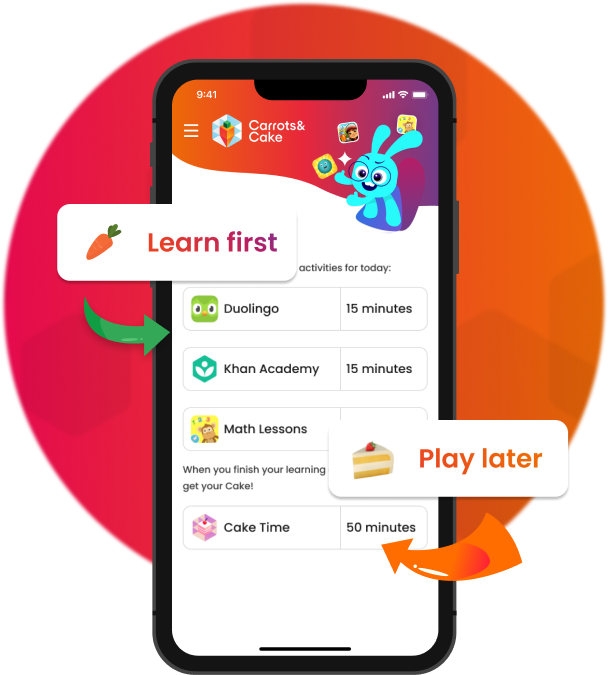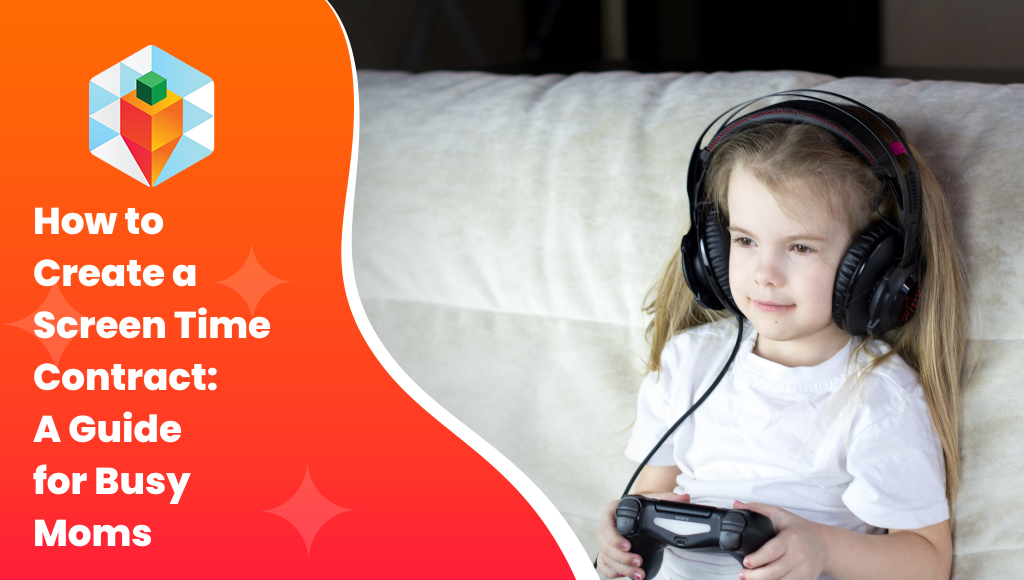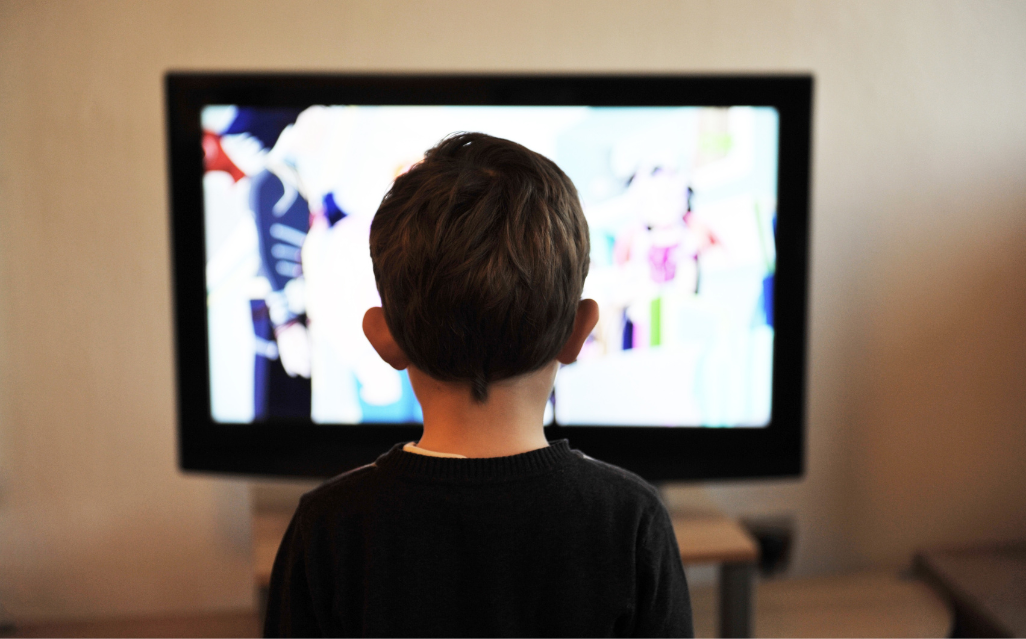


As parents, we all want our kids to have a healthy relationship with screens. We know that too much screen time can be detrimental to their development and well-being. But how do you create a balance? One way is by creating a family screen time contract! This blog post will provide an overview of the steps needed for families to successfully create a screen time contract, as well as helpful tips on monitoring usage and making meaningful connections while using digital devices. From establishing rules and guidelines, implementing the contract, monitoring usage and adjusting accordingly – this guide has everything your family needs to set up effective boundaries when it comes to digital use in your home. Let’s get started so you know how to create a screen time contract and make sure that everyone enjoys positive experiences online!
Establishing rules and guidelines for screen time is an important step in knowing how to create a screen time contract. Setting ground rules helps to ensure that kids understand the expectations and limits of their digital activities. Parents should consider setting clear boundaries, such as no screens during meals or after bedtime, and establishing a daily limit on how much time can be spent online. It’s also important to create a schedule that works for your family so everyone knows when it’s okay to use devices.
Defining Screen Time Limits: To help keep track of screen time usage, parents should set specific limits on how long kids are allowed to spend using devices each day. This will depend on the age of the child and what activities they are engaging in while online. For example, younger children may need shorter amounts of time than older ones who are completing schoolwork or other educational tasks with their device use.
Creating a schedule is key for helping kids stick to their screen-time limits each day. Parents should decide when it's appropriate for kids to use devices, such as before homework or after dinner, and make sure these times fit into the overall family routine without disrupting other activities like outdoor play or quality family time together away from screens. Scheduling regular breaks throughout the day can also help prevent burnout from too much device usage at once and encourage healthy habits around technology use over time.
If you wonder how to create a screen time contract, you can get started by creating rules and guidelines. By implementing a screen time contract, parents can communicate expectations to their children and enforce it fairly and consistently.

Communicating Expectations to Kids: It’s important for parents to communicate the expectations of their contract with their children. Explain why it is important and how it will benefit them in the long run. Make sure they understand that this isn’t just a rule, but an agreement between both parties. Let your child know that you are open to hearing their ideas and concerns about the contract as well.
Enforcing the Contract Fairly and Consistently: Once you have established a contract with your child, make sure you enforce it fairly and consistently. This means setting clear boundaries on what is acceptable behavior when using digital devices or engaging in online activities, such as no cyberbullying or sexting. Be consistent with consequences if rules are broken so that kids understand there are real-life repercussions for not following through on agreements made within the contract.
As much as possible, try to involve your child in creating solutions together rather than imposing punishments without input from them. Encourage open dialogue by asking questions such as "What do you think would be fair?" or "How can we work together to find a solution?". This helps foster mutual respect between parent and child while teaching problem solving skills at the same time.
It's important to set expectations for screen time usage and enforce the contract consistently, but also keep in mind that it may need to be adjusted as your child grows. Next, we'll discuss how to monitor usage and make necessary changes.
As parents, it’s important to monitor our children’s screen time usage and adjust as needed. To do this effectively, we need to track their usage with parental controls, evaluate progress regularly, and make changes when necessary.
Tracking Screen Time Usage with Parental Controls: Using parental control apps or built-in features on devices can help us stay informed about how much time our kids are spending online. We can also set limits for certain activities like gaming or social media use so that they don’t get too carried away.
Evaluating Progress and Making Changes as Necessary: It’s essential to check in periodically to see if the rules we have established are working well for everyone involved. If not, then it may be necessary to adjust them accordingly by adding more structure or loosening up a bit depending on the situation.
As our kids grow older and their interests change over time, it is important for us as parents to remain open-minded about what works best for them at any given moment. We should be willing to try new things if something isn't working out quite right instead of sticking rigidly with one plan all the time; this will help ensure that our children are getting the most out of their screen time experience.
Monitoring and adjusting screen time usage as needed is an important part of helping kids develop healthy digital habits. Next, let's look at how to make screen time meaningful for your child.

Screen time can be a great way for kids to learn, explore, and have fun. But it’s important that parents make sure their children are using screens in meaningful ways. To do this, parents should incorporate educational activities into their child’s routine, limit unstructured browsing or gaming time, and find a balance between fun activities and learning activities.
Incorporating Educational Activities into Screen Time: There are many apps and websites designed specifically for educational purposes that can help your child learn new skills or reinforce what they already know. These programs often include interactive games or quizzes that make learning more engaging for kids. For example, ABCmouse is an online curriculum with over 9,000 lessons across 10 levels of learning in math, reading & writing, science & social studies, art & music and more!
Limiting Unstructured Browsing or Gaming Time: While there are plenty of educational opportunities available on the internet today – there is also a lot of content that isn’t suitable for young children. Parents should monitor what their kids watch on YouTube or play on video game consoles to ensure they aren’t exposed to inappropriate material. It's also important to set limits on how much unstructured screen time (such as watching TV shows) your child has each day so they don't become overly reliant on screens as entertainment sources.
Kids need a combination of structured and unstructured screen time in order to develop healthy digital habits. Structured screen time refers to activities such as playing educational games or doing research online, while unstructured screen time includes things like watching movies or playing video games without any specific goal other than having fun. Finding the right balance between these two types of activities will help keep your kid engaged without becoming overly reliant on screens.
By creating a contract that includes meaningful activities and limits unstructured browsing or gaming, parents can help their children use screen time in a beneficial way. To further strengthen family connections, it is important to also schedule quality family time away from screens and encourage other hobbies or interests.
We need to make sure we are also providing them with quality family time away from screens and encouraging other hobbies or interests outside of technology use.
Scheduling Family Time Away from Screens: Scheduling regular family activities can help strengthen the bond between parents and their kids. It doesn't have to be anything extravagant - a simple picnic in the park or an afternoon at the beach can do wonders for your relationship! Additionally, having designated “screen-free zones” in your home (like bedrooms) will ensure that everyone has enough downtime away from devices.
Encouraging Other Hobbies or Interests: Technology should not be used as a substitute for real-life experiences and interactions. Encourage your child to explore different hobbies such as sports, music, art, reading etc., so they can develop new skills and learn more about themselves in the process. This will also give them something productive to focus on instead of spending all their free time online or playing video games.
Quality interaction is key when it comes to staying connected as a family; try not to get too caught up in how much screen time each person gets but rather focus on making sure everyone has enough one-on-one time with each other throughout the day, week, month etc. For example, set aside some special moments where you sit down together without any distractions like phones or TVs - this could be during dinner times or even while doing chores around the house together.
A screen time contract is an agreement between parents and their children that outlines the expectations for responsible use of digital devices. It includes rules such as how much time can be spent on a device, what type of content is allowed, when devices should be put away, and any other guidelines the parent deems necessary. By signing this contract, both parties are held accountable to these rules in order to ensure healthy habits are formed with technology usage.
1. Educational Screen Time: This type of screen time involves using digital devices to learn, such as educational apps and websites. It can help children develop their knowledge and skills in a variety of areas, including math, science, language arts, social studies, and more.
2. Recreational Screen Time: This type of screen time is used for entertainment purposes, such as playing video games or watching movies/TV shows. It can be beneficial when it encourages creativity and problem-solving skills but should be limited to preventing addiction or overuse.
3. Social Media Screen Time: This type of screen time involves using digital devices to interact with others through various platforms like Facebook, Instagram, Snapchat etc., which may have both positive (connecting with friends) and negative (cyberbullying) effects on kids’ mental health depending on how they use them responsibly.
4. Creative Screen Time: This type of screen time allows kids to express themselves creatively by creating art projects or music compositions using digital tools like drawing apps or music software programs respectively. It helps foster self-expression while also teaching them valuable technical skills that will benefit them in the future
Carrots&Cake allows parents to set screen time limits for their children. Parents can easily customize the amount of time each child is allowed to spend on devices, as well as which apps and websites they are allowed to access. The app also provides insights into how kids use their devices so that parents can adjust settings if needed. Additionally, Carrots&Cake's screen time controls encourage kids to build balance, self-regulation, and delayed gratification. With Carrots&Cake, parents can ensure their children are getting the most out of screen time while still setting healthy limits.
Creating a family contract is an important step in helping your children develop healthy digital habits. Start by setting clear expectations for how much time they can spend on their devices and what activities are allowed. Make sure to include consequences for not following the rules, such as taking away privileges or reducing screen time. Talk with your kids about why these rules are important and make sure everyone understands them before signing the contract. Finally, have each family member sign it so that everyone is held accountable for following the agreement.
Dr. Gwenyth Jackaway offered her insights on the concept of screen time contracts to Carrots&Cake:
"One piece of advice that any parent who's interested in this topic will encounter pretty quickly because it's so pervasive is this recommendation to make a screentime contract or a family digital media contract. I used to teach about this in my own classroom when I taught a course about children and media. And I used to think it was a great idea. And what I liked about it was, by definition, it gets the parent and the child to sit down and have a conversation about media and the value of limits. So that part is good. Just sitting down and saying I want to talk to you about your screen time use. And let's think about more balanced habits. That's great. But the problem is the very concept of a contract. So adults make contracts with each other. And as the courts can amply prove, it's hard enough sometimes for adults to keep contracts with each other. Um, a contract implies that both are all members of the contract and have the capacity to fulfill it cognitively.
And in terms of their emotions, social-emotional development. But a contract between an adult or several adults and a child or several children, if this is like a group process, is that the children and even teens really don't have the cognitive ability to be held accountable in that way. And so then when, and it might work for a few days or a few weeks, or, you know, depending on the child and the family and what the contract was, but eventually, as many contracts do, there's some breakdown. And then the danger is now you have a situation where the child made a promise, basically, if you can think about a contract as a promise and agreement, and now there's been a break in that. And now you have issues of trust. And can I believe you and you've broken our contract, which is about our relationship and the child, you know, is like depending on how the parent handles the breaking of the contract, then it can become a much bigger emotional dynamic, where it's not even about the screentime anymore. It's you've broken your word, and how can I trust you And then there can be shame or negative consequences. So yeah, it's that can snowball, Cantus, it can snowball, and then everybody loses, um, and then I actually think the child or the team could end up resenting the whole process rather than it was seen, you know, then that will feel like a failure, and the parent will feel like a failure. And then what do you do? How do you repair and move on from that? So that's a big problem with screentime contracts."
Watch the full interview here
Creating a screen time contract is an important step in helping your family establish healthy digital habits. Many parents find themselves wondering how to create a screen time contract. By setting clear rules and guidelines, implementing the contract, monitoring usage and adjusting as needed, making screen time meaningful, and staying connected as a family, you can ensure that your children are getting the most out of their digital experiences while also limiting potential risks associated with too much screen time. Creating a screen time contract is not always easy, but it’s worth taking the extra effort to make sure that everyone in your family is on board with the plan.
Do you want to help your kids make the most out of their screen time? Carrots&Cake is here to provide you with a solution. Our parental control app makes it easy for parents and guardians to create a personalized screen time controls that set limits on how much and what type of content children can access online. With our expert-backed resources, we’ll show you how to use technology in ways that will encourage healthy digital habits so your child can benefit from their screen time!






